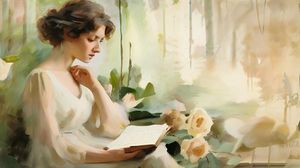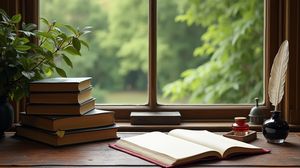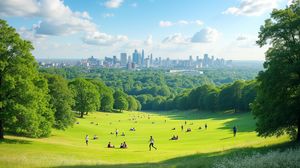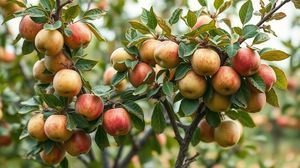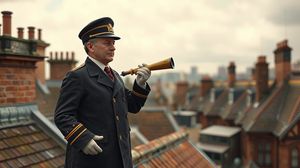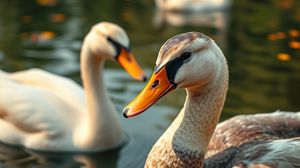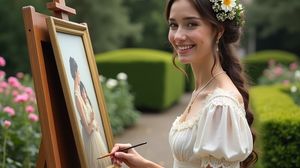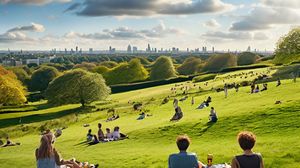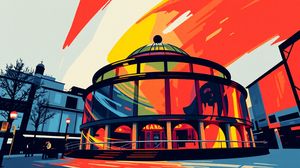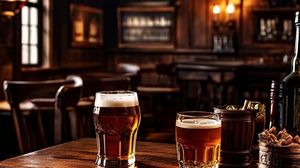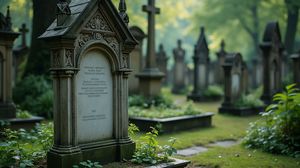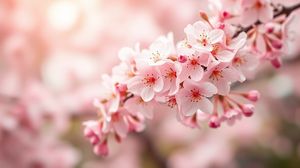
The John Keats Blue Plaque in Hampstead marks the residence of one of England's most celebrated Romantic poets, John Keats. Keats lived in this Regency-era house from 1818 to 1820, a particularly creative and poignant period in his life during which he composed some of his most famous works, including "Ode to a Nightingale".
This charming abode, known historically as Wentworth Place, is now the Keats House, a museum dedicated to the poet's life. Visitors can explore the rooms where Keats wrote many of his masterpieces, offering a tangible connection to his poetic genius.
One of the more intriguing aspects of Keats' time here is his penchant for writing outdoors; he often composed poetry under a plum tree in the garden, a site that some argue inspired "Ode to a Nightingale".
Another interesting point is the personal history imbued in the house; it was here that Keats fell deeply in love with Fanny Brawne, his next-door neighbor and the inspiration for many of his passionate letters and poems. Their love story adds a deeply human touch to a visit.
Keats' time at this house was bittersweet, marked by the onset of tuberculosis, the disease that eventually claimed his life. The house stands as a poignant reminder of both his youthful brilliance and his tragically short life.
Today, the house not only preserves the memory of Keats but also acts as a cultural haven for literature enthusiasts, hosting poetry readings, literary talks, and special exhibitions related to Romantic literature.

Making the Most of Your Visit:
When you get to the Keats House, take a moment to stand in the garden beneath the branches of what is thought to be the spot of Keats' famous plum tree. It's the perfect place to channel your inner Romantic poet, and you might even feel a connection to the past where Keats once sat and found inspiration.
Don't rush through the house. Spend time in the rooms, especially the ones where Keats composed his poems, like his writing room. Imagine the drafts and notes scattered around as he worked. You really get a sense of the creative process being in that space.
The love story aspect is quite touching, so take note of the exhibits relating to Fanny Brawne. Not only do they speak about Keats' romantic side but also give a glimpse into the social connections of his time.
The museum doesn't just stick to history, it's quite an active cultural spot. Check the schedule for any poetry readings or special events, as they can make your visit even more memorable. Even if none are scheduled on your visit day, the exhibitions alone often feature unique artifacts that aren't always on display.
If you have the time, indulge in reading a few of Keats' poems when you're there. Knowing the setting where he wrote works like "Ode to a Nightingale" adds a layer of depth to his words that's hard to replicate elsewhere.

Visiting Times & Costs:
The John Keats Blue Plaque marks the Keats House, which is open to the public for visits.
Opening Hours:
- March to October: Wednesday to Sunday, from 11:00 AM to 5:00 PM.
- November to February: Friday to Sunday, from 11:00 AM to 4:00 PM.
- The house may be closed on certain public holidays.
Admission Fees:
| Category | Price |
|---|---|
| Adult | £8 |
| Concession | £6 |
| Child (under 18) | Free |
| Art Fund National Art Pass Holders | Free |
Access to the garden is usually included with the admission to Keats House.
Accessibility:
- The ground floor and garden are accessible to wheelchairs, but the first floor can only be accessed by stairs.
- There are no elevators within the historic house.
- Accessible toilet facilities are available on site.

Address & Map:

Nearby:
